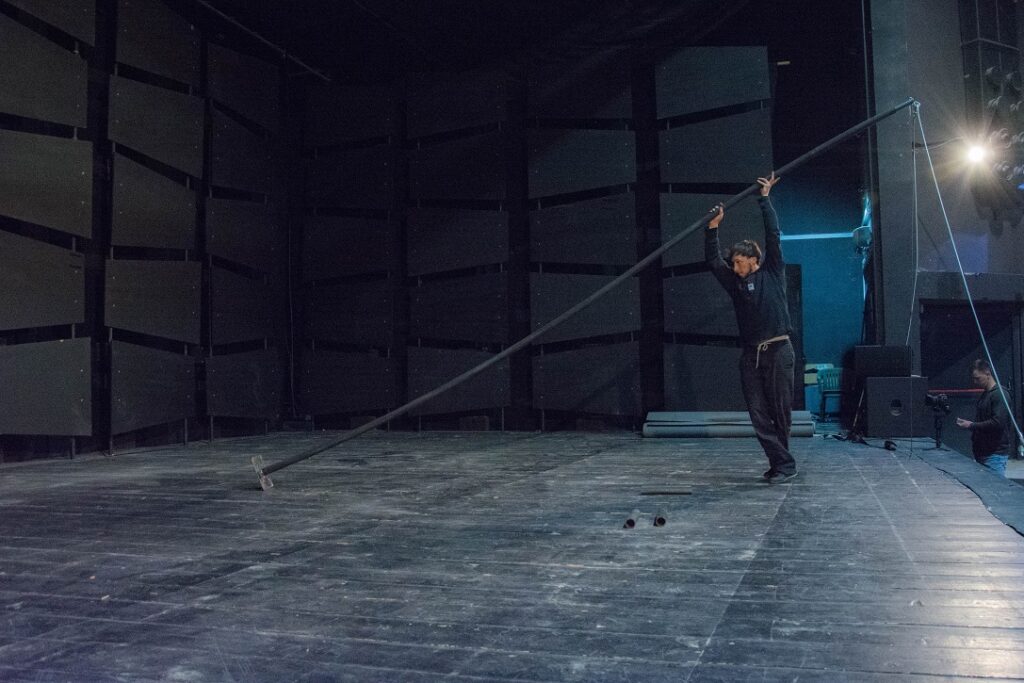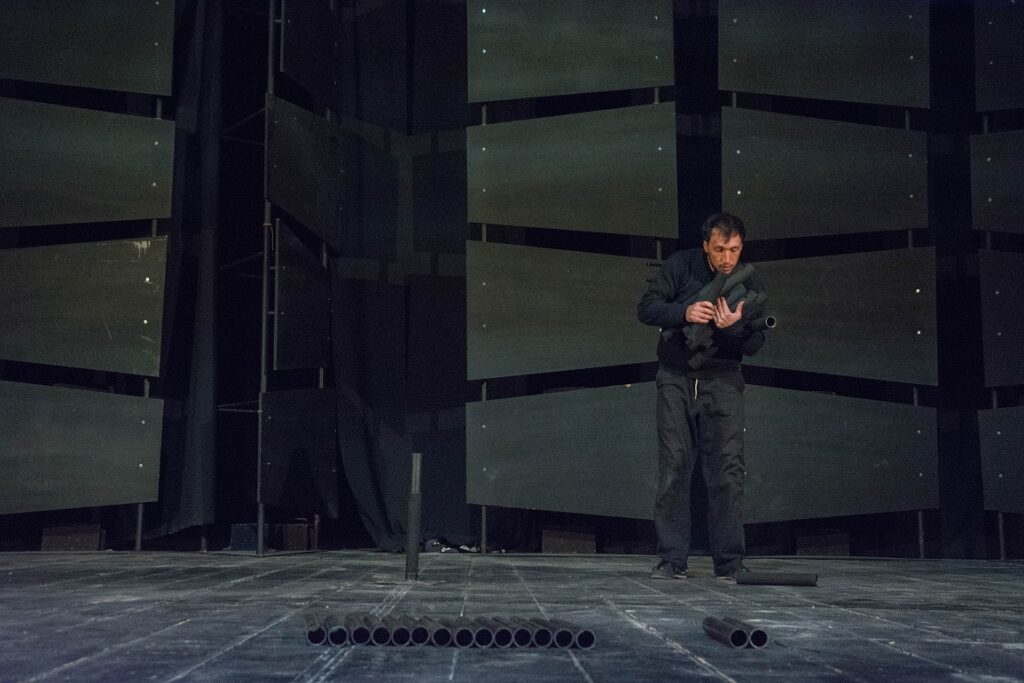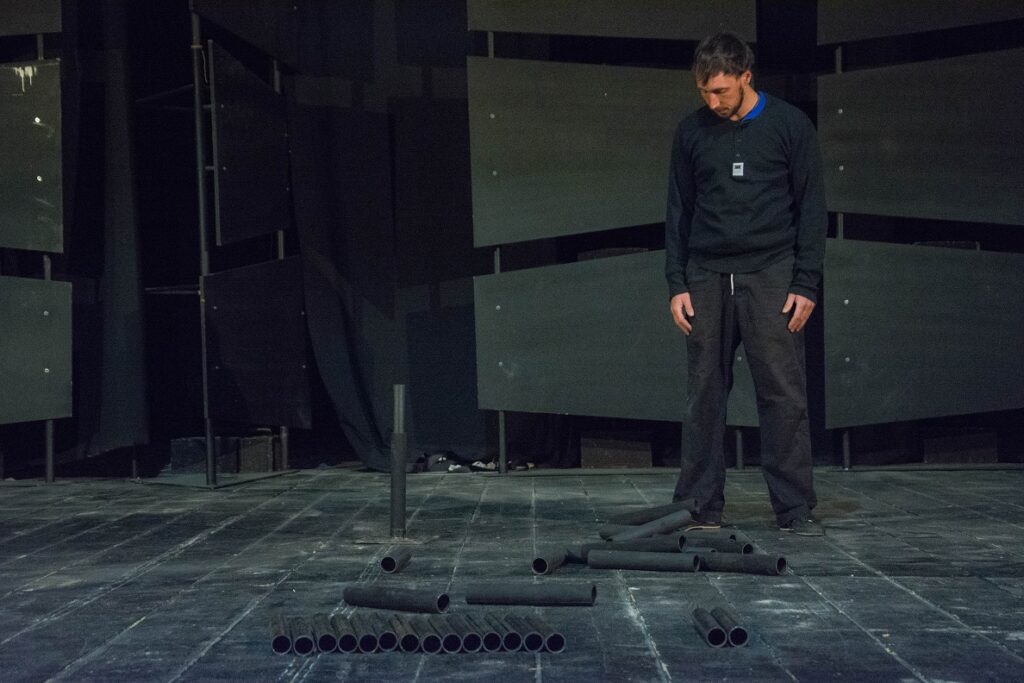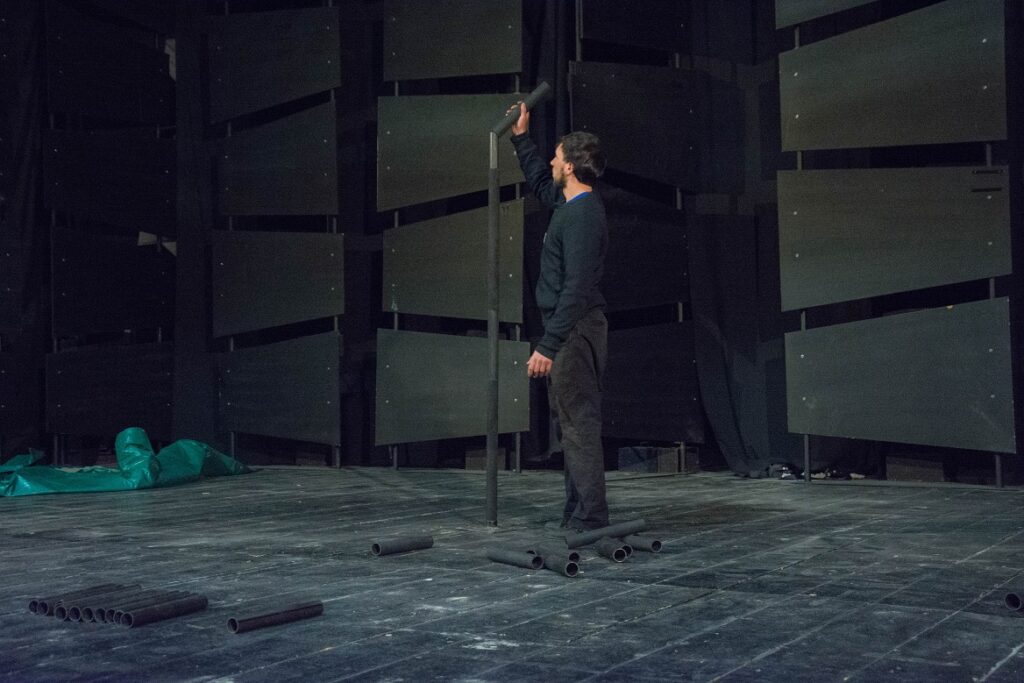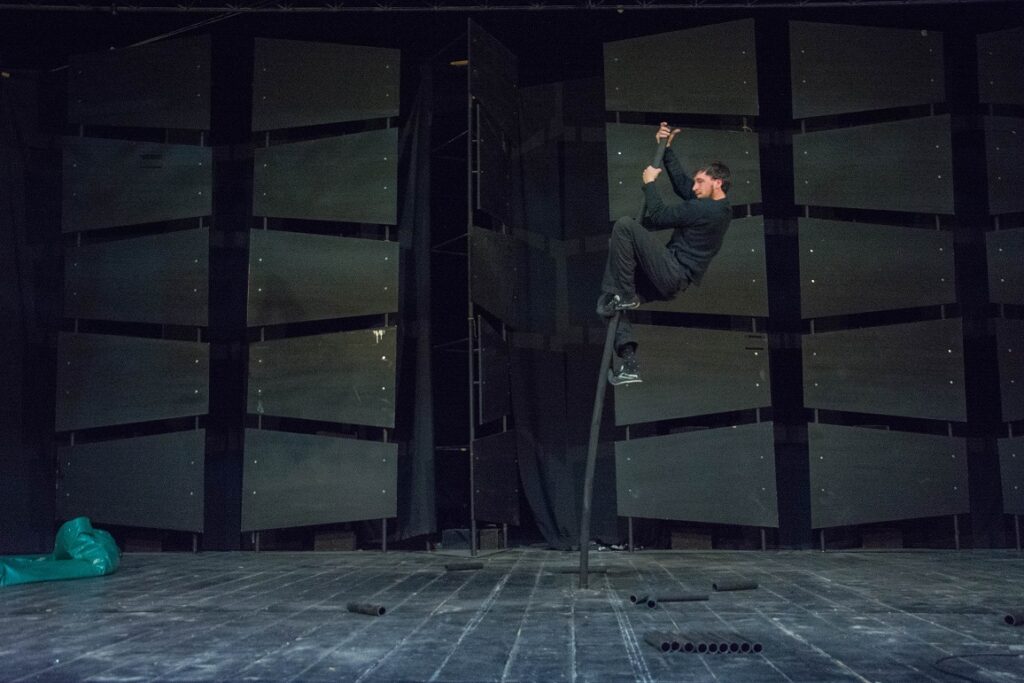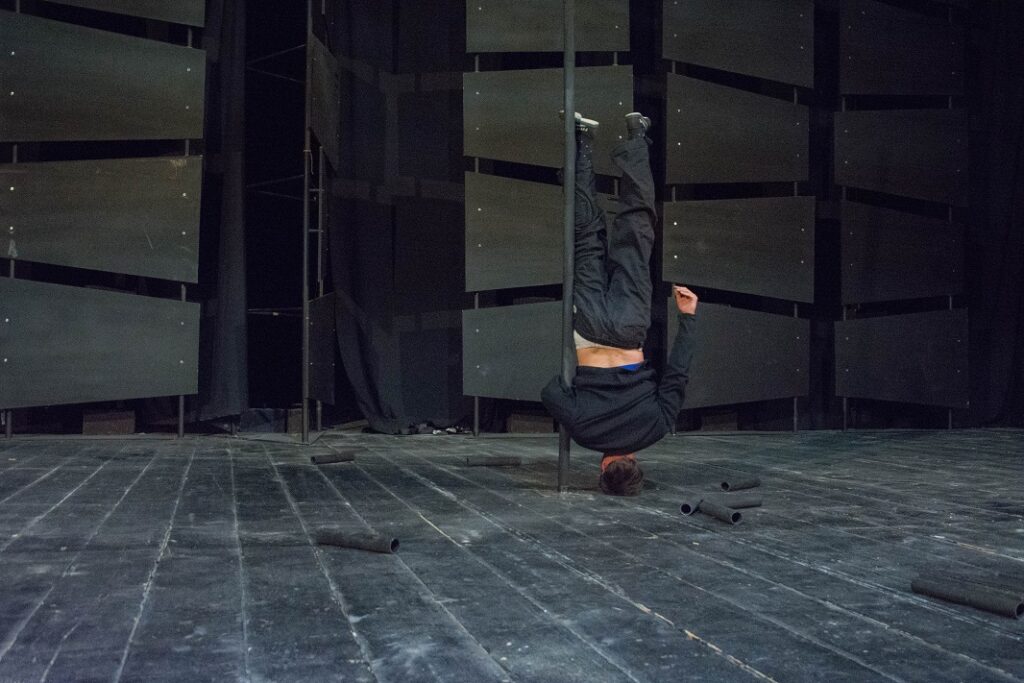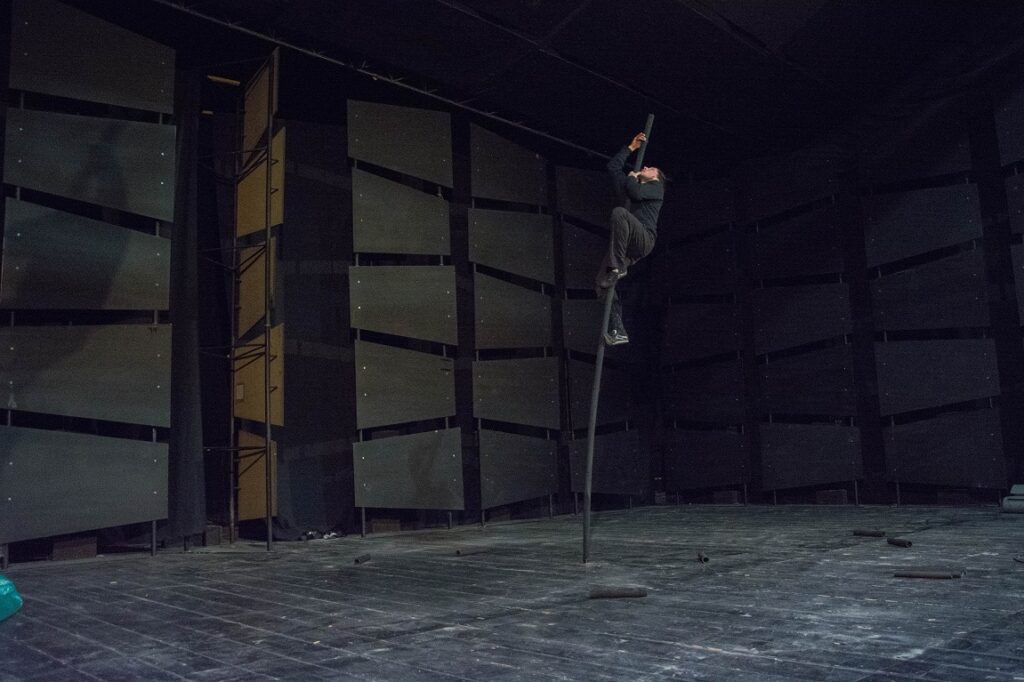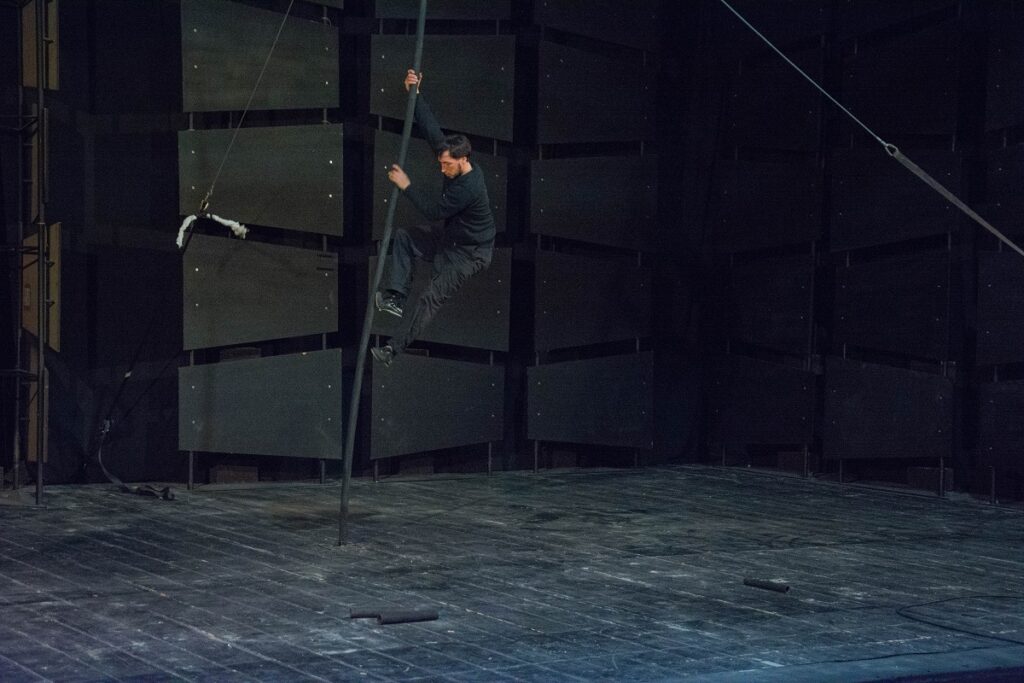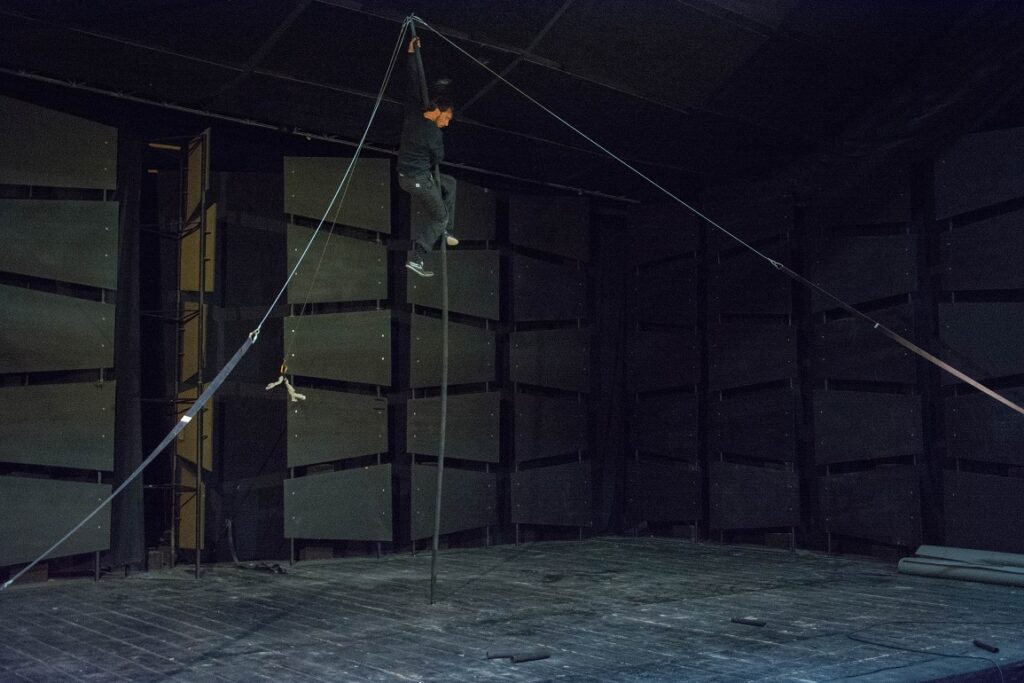French circus artist Nicolas Fraiseau and Italian architect Cristina Gallizioli worked together in Split (Croatia) from 5-18 April 2021.
Before the residency in Split we called each other a couple of times, to see what topics we had in common and what were our desires for this 12 days research. Coming from two different backgrounds, circus and architecture, we actually discovered that we had many shared interests, which could be applied to both fields at the same time. We were both interested in working on the interaction between bodies and materials. Cristina wished to deepen her embodied perception of materials and space and Nicolas wanted to bring to Split some circus materials to get another perspective on them: fire, wax and Chinese pole.
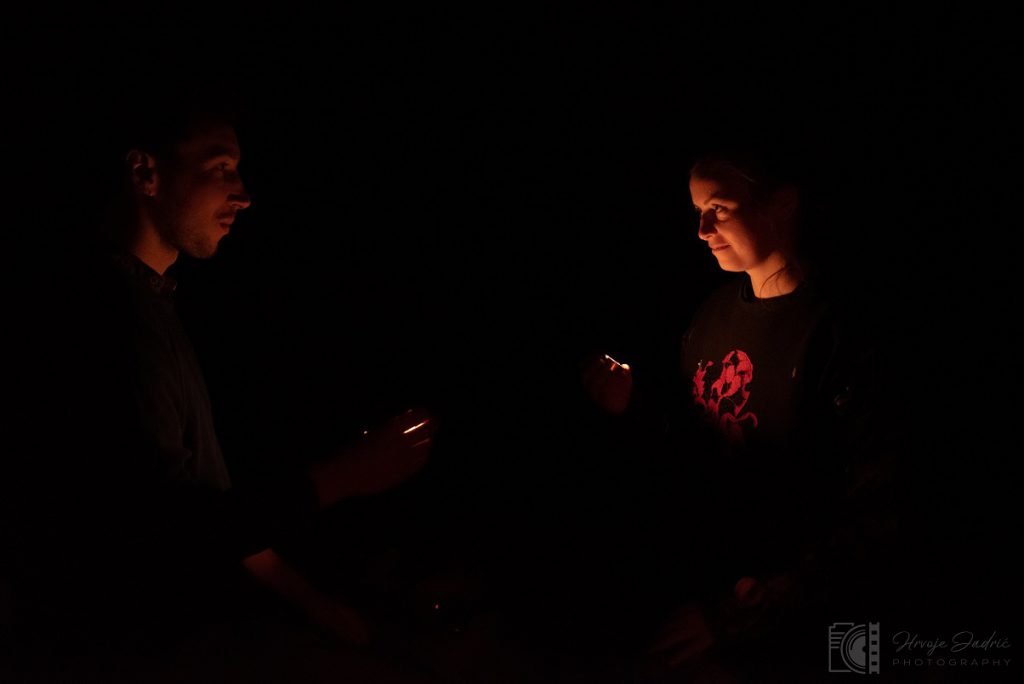
During the residency we decided to work on fire, wax and Chinese pole as materials for circus and architecture and to use them as a starting point for broader reflections on our two artistic approaches. We wanted to go extreme with these materials, explore their limits and work at their edges: where do they bend, break, blow out or dissolve? And how does the limit of the material affect the performers on stage?
The limit of materials called for another topic, which is our interest in fragility. Circus and architecture are two fields in which strength and resistance are considered positive aspects, against fragility and vulnerability. Circus artists generally appear strong and effortless on stage, and successful architecture should be sharp and iconic. In our artistic paths we already go against these definitions. Nicolas alters the circus tools, such as the chinese pole structure and ways of mounting it, to make its interaction with the performer more fluid and uncertain. And Cristina works with architecture made of soft materials such as fabrics, or dissolving architecture blending it into landscape.
So we wanted to study together points of fragility of performers and materials, as we both like to include errors and humanity in the artistic process: to make works that are not perfect, but in which you feel a sort of vulnerability and humanity.

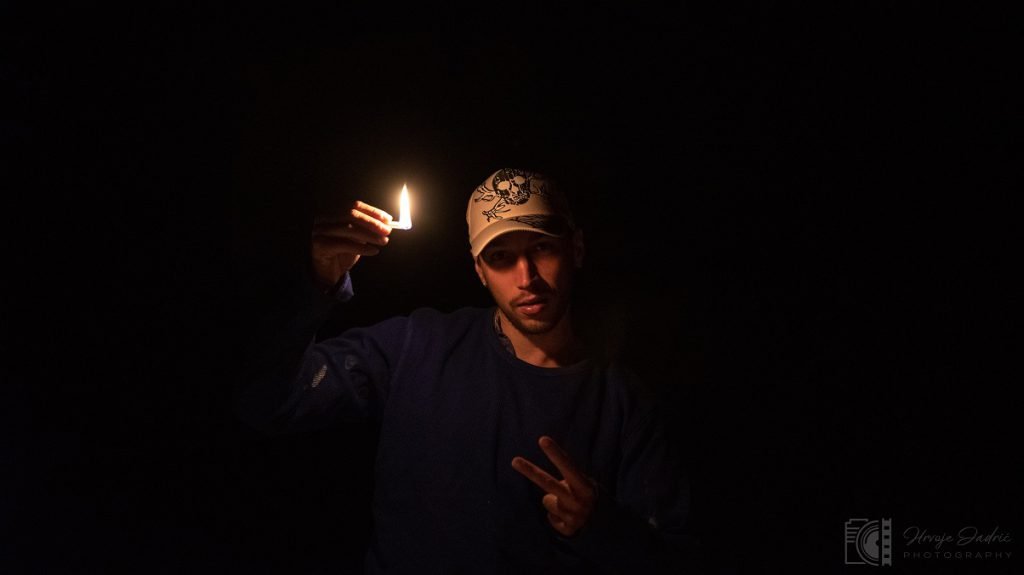
The first week we worked on fire, but instead of thinking about fire in dangerous and extreme terms, we went to the other end of the extreme: the fragility of fire when it’s very tiny as a candle or a match. We performed for each other, doing one improvisation session each with fire and then giving feedback and switching roles. For us it was very important to apply a similar method, and don’t divide the activities by artistic field (such as Cristina makes scenography and Nicolas performs). Instead we both built space and performed at the same time, and this was important for Cristina to feel the fire space and be with it, and for Nicolas to see another point of view on fire as a material.
We first worked on making spaces with fire, placing groups of candles on stage to create a series of thresholds in which to move, and while the performer was moving, the candles would be rearranged, to have a changing setting all the time. This was an interesting test, but the tiny scale of the candles was difficult to relate with the scale of a moving body. In this way, the improvisation looked like a person manipulating candles, instead of moving together with them.
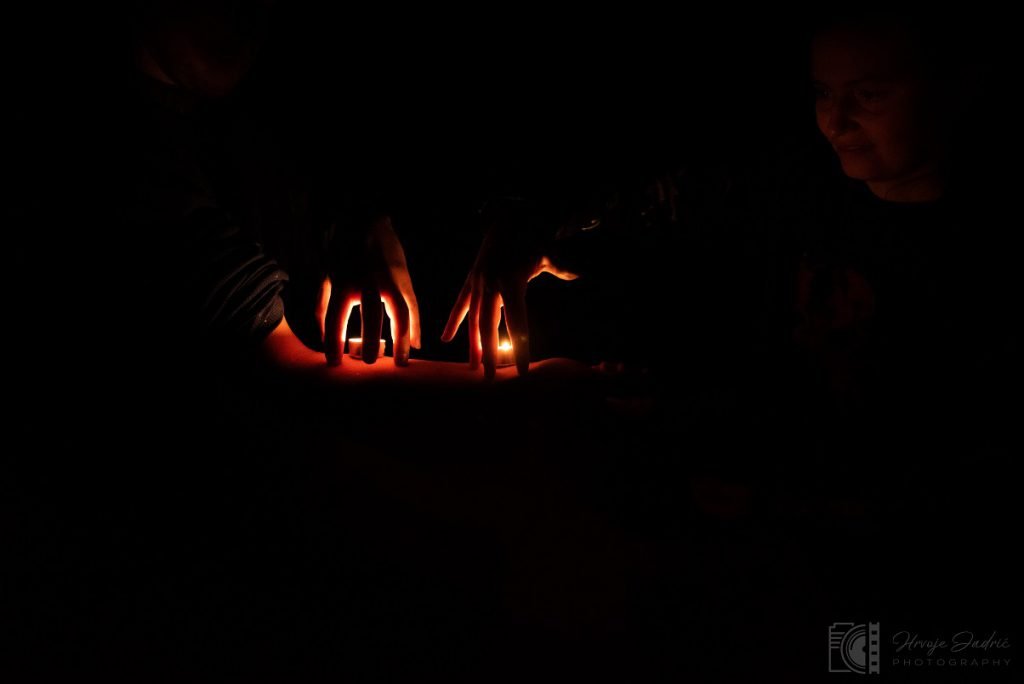
In the following days, we worked more on how to be together with the candle, and give space to its fragile flame and to the body in movement. During one interesting improvisation session we started sticking candles on our bodies with melted wax, and to move in space dressed with candles. Sticking a candle on one foot and walking, or sticking a row of candles on both arms, making circles and lines with both arms dotted with candles. While moving some of the candles would fall or extinguish, changing what parts of the bodies were visible.
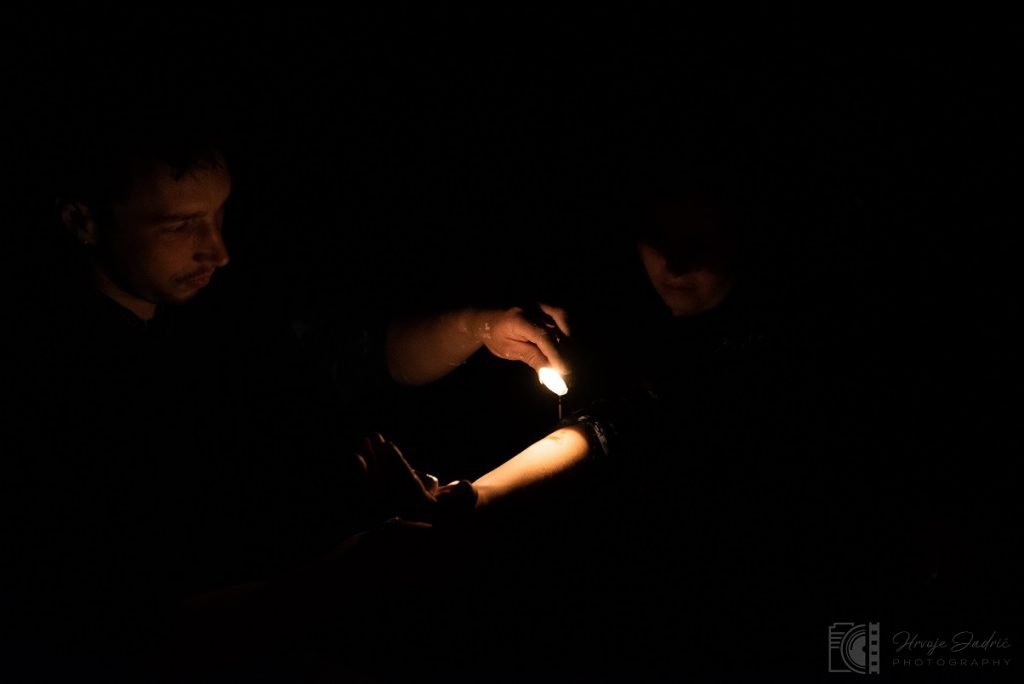
We also worked on the little flame, how it interacts with the skin with soft light and how the performer can protect its fragility, and ways of extinguishing the flame including this in the dramaturgy.
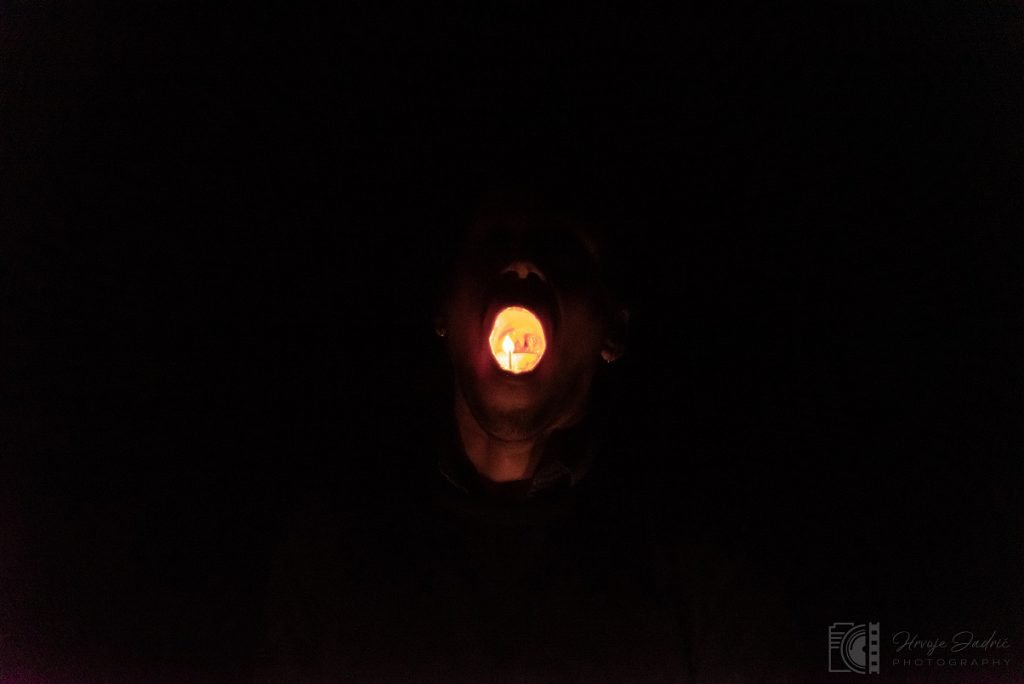
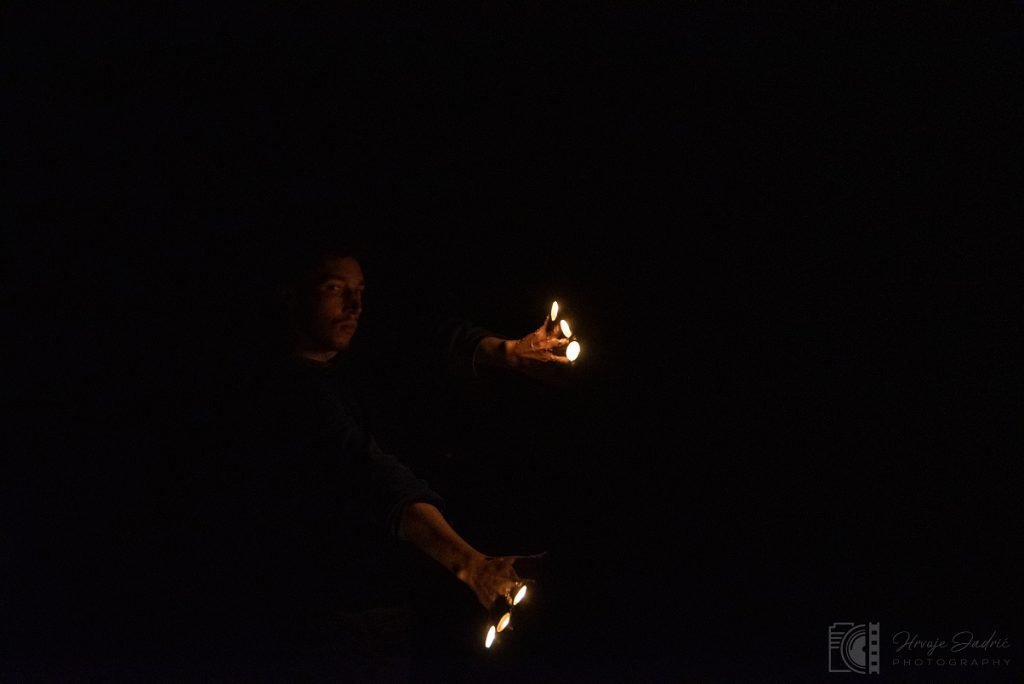
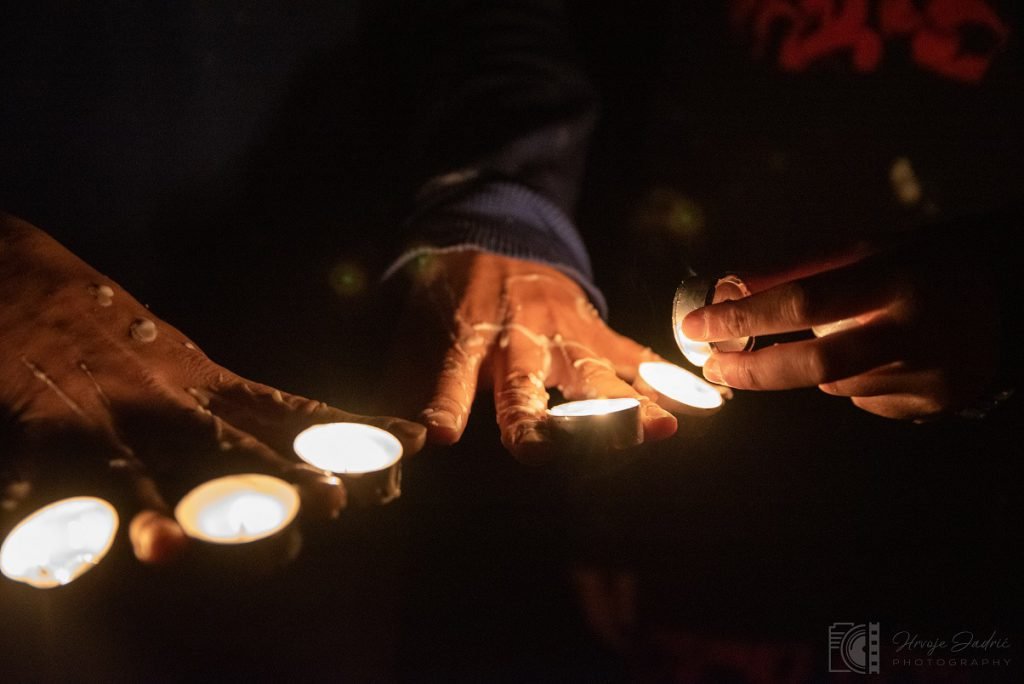
As fire is a relational material, it just works in relation with other materials: a match, a candle, wax or paper. We tried these relations with fire and other materials, focusing on wax. The most interesting experiment we made was to craft big wax plates, 2-3mm thin and 1m wide. The plates were opalescent and extremely fragile, we included them in our improvisation sessions, melting them or cracking them, but it was difficult to find a dramaturgy for this kind of material and let it enter in a relation with our bodies. I think it’s something we would both like to develop further: once the wax plates are done, how can they become active elements for a show?
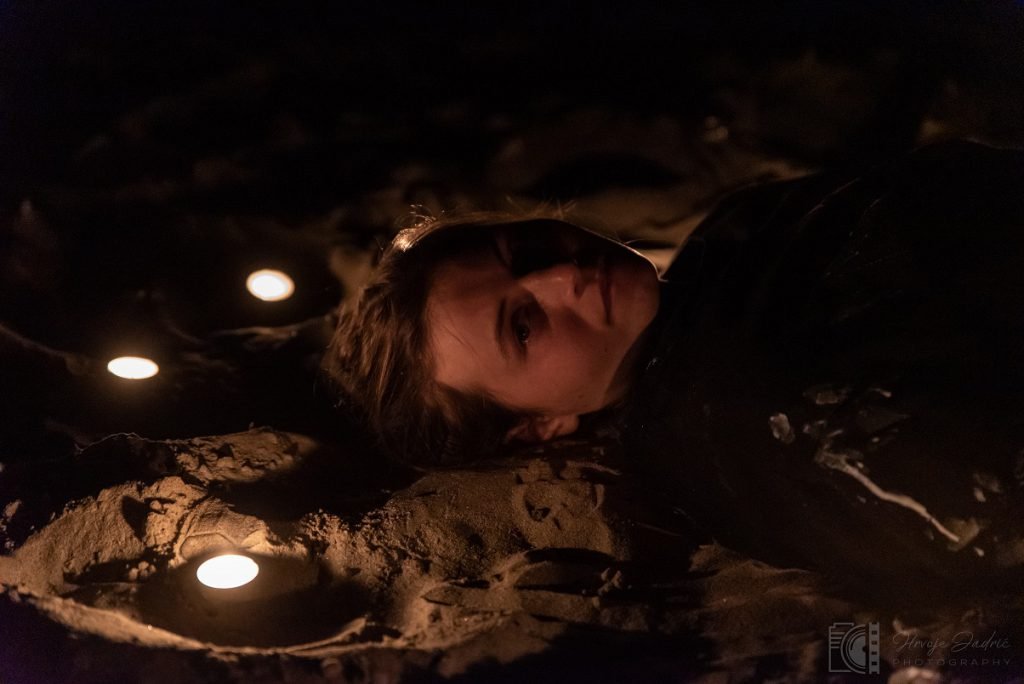
During the residency we also made a Chinese pole in small pieces, with two intersecting metal tubes. The tubes are cut in pieces and are inserted one into the other, and the gap between the tubes makes the connection loose. In this way, instead of being straight, the Chinese pole makes curves, and these curves change while Nicolas moves on the pole. In this way, the pole appears very unpredictable and fragile, and the experience of the circus artist is more open to the unknown. Where will the pole bend? Will it hold the weight if it’s too off axis? How to put it up and down, how many ways to do it?
The project of the Chinese pole was already in Nicolas mind for some time and he made some previous tests, Cristina helped building. It was a source of inspiration for her to see such an unstable architecture and also participate in building it. This Chinese pole looked loose and fragile, and exposed the performer to vulnerability due to its unknown margins of action.
Outcomes of the residency
For Cristina the outcome of this residency was to reach a deeper perception of her body in space, thanks to the time spent with Nicolas and exchange of practices and sensibility. She ended up being interested in using the 12 days for performing rather than designing, and this nourished her ongoing research on how to use performance in her architectural practice. Moreover she was not used to being on stage and being watched, and that was another interesting point of reflection, how to make her body visible and present in relation to the whole space, and how to bring this within her architecture work.
For Nicolas the outcome of this residency was to expose some research already launched, and try to melt it with a new creative process, such as Cristina’s one. Nicolas and Cristina have spent time talking about their points of view. Also, they shared construction knowledge and developed sensibility processes to focus on particular emotions, way or feeling during improvisation or in everyday life.
For both of us it was very surprising and inspiring to have so many shared topics which were fitting both circus and architecture, such as interest in rethinking our field’s materials, and work with their fragilities, plus focusing on both action and space in our works. And at the same time, understanding differences in each other’s point of view, to enrich our individual practices with new ideas about circus, materials and space.
Pictures of the candles (c) Hrvoje Jadric
Pictures of the Chinese pole (c) Tea Truta
